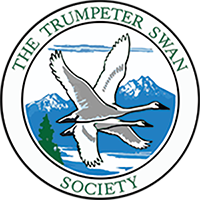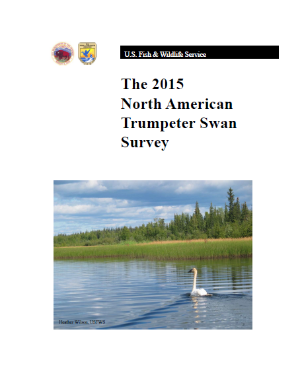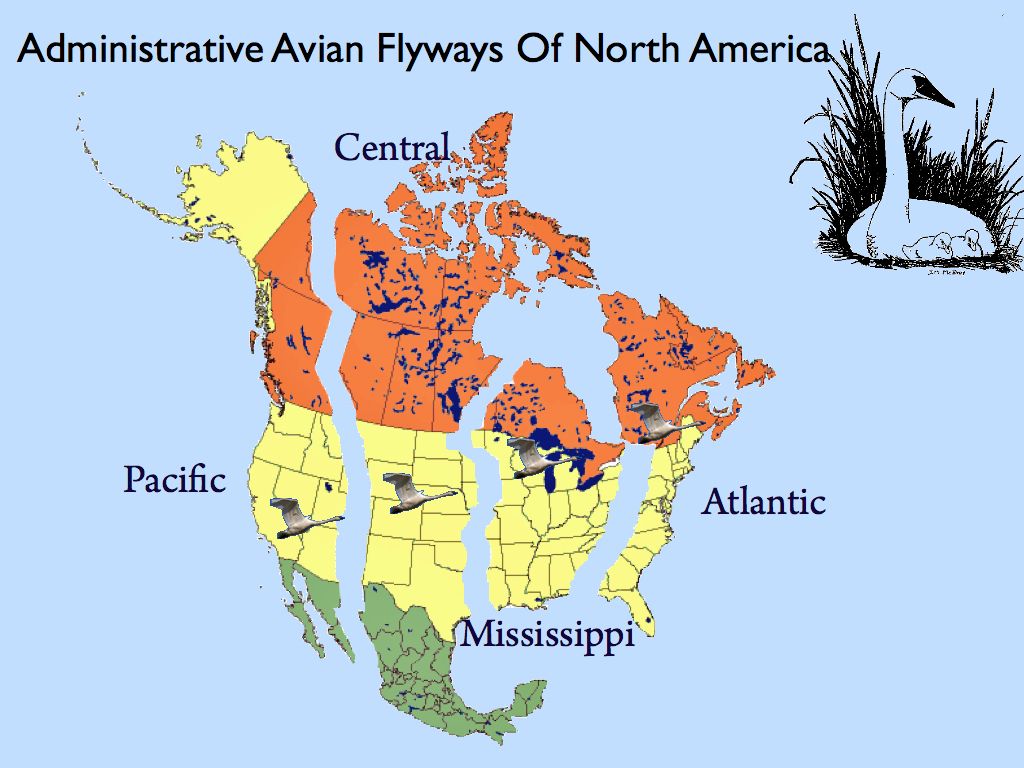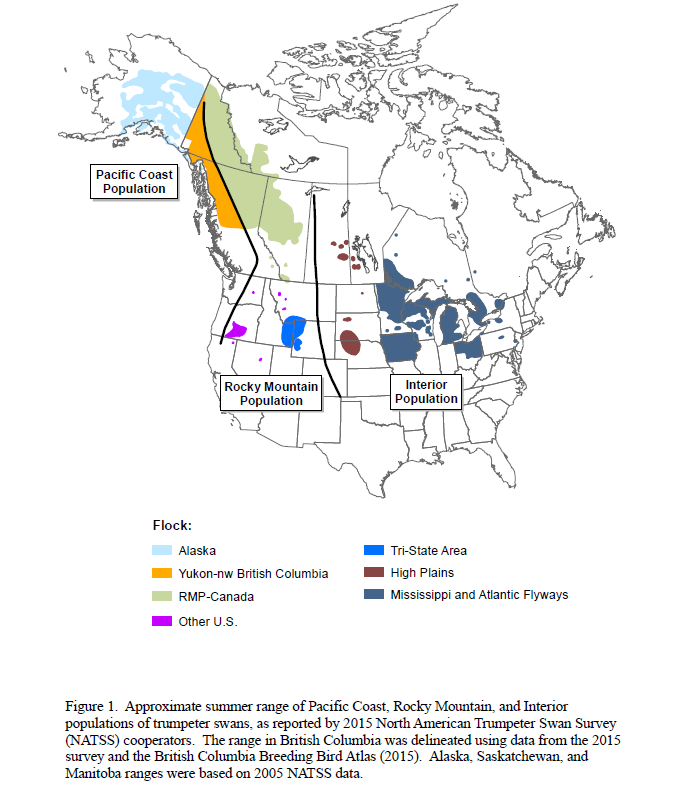Photograph by Richard Sonnen
Continent-wide
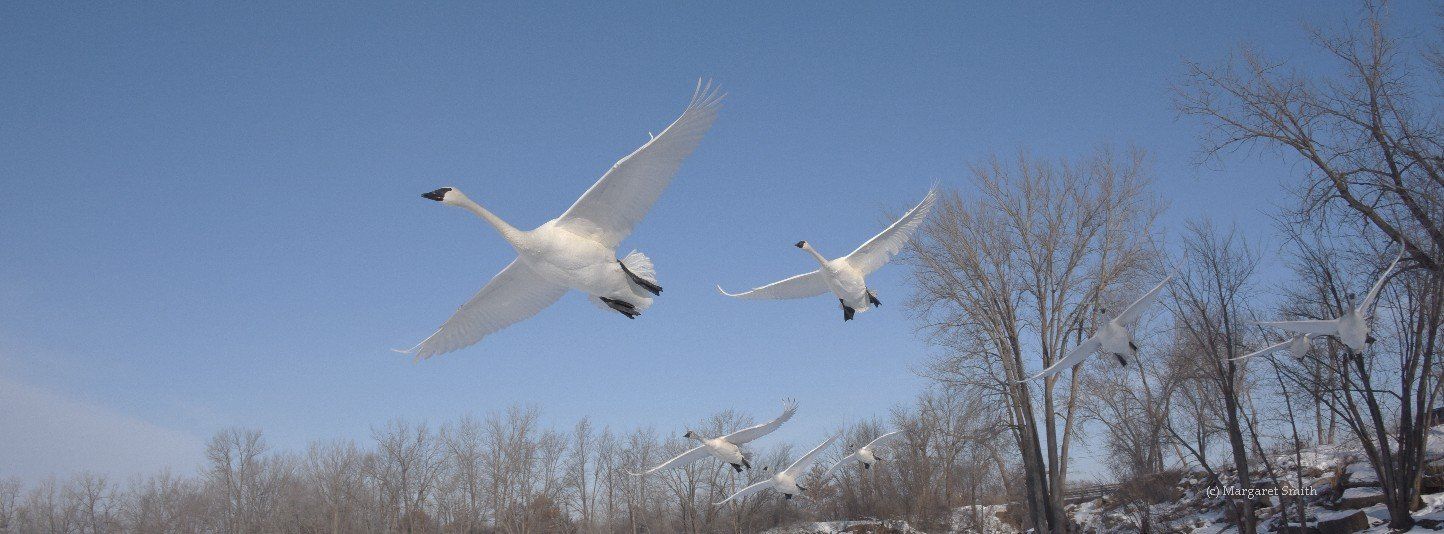
Photograph by Margaret Smith
Rescued from the brink of extinction
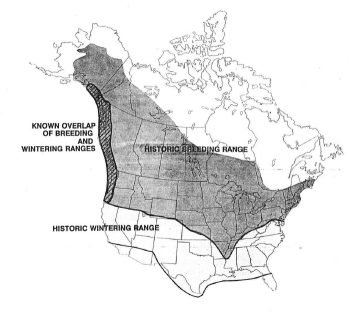
1995 map (Mattesen et al.) of historic Trumpeter Swan breeding and winter Range.
The story of North America's Trumpeter Swan restoration is filled with partnerships, adventure, and educational leadership.
The historic breeding and wintering range of Trumpeter Swans (Cygnus buccinator) once covered much of North America. The population was severely depleted by subsistence hunting and over 125 years of commercial swan skin harvest by hunters and trappers for the Hudson Bay Company (Banko). Many thousands of skins were shipped to Europe between 1772 and the late 1800s.
In 1929, the National Park Service began a survey to determine the population status of Trumpeter Swans. By 1932, they had found 31 swans in Yellowstone Park in Wyoming, 26 on the Red Rock Lakes in the Centennial Valley of Montana, and 12 others in the surrounding region. Ornithologists had little hope for their continuing existence.
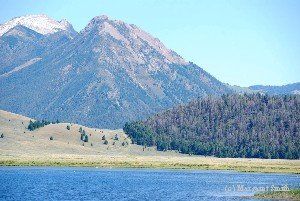
Red Rock Lakes National Wildlife Refuge is in the Centennial Valley of southern Montana. The tiny white dots on the lake are Trumpeter Swans. Photograph by Margaret Smith
At the time, these were thought to be the only birds remaining for the entire species. In response, in 1935 Red Rock Lakes National Wildlife Refuge was created in Montana to protect this small remnant. Later, other previously unknown and unrecorded remnant populations of Trumpeters were found in western Canada and in parts of Alaska.
In 1959, when Alaskan nesting areas were first surveyed, the total number of wild Trumpeter Swans had increased to at least 1,914, including 1,124 in Alaska, 127 in western Canada, 631 in Greater Yellowstone, and 32 on national refuges elsewhere in the western United States.
Trumpeter Swans and their eggs from the Red Rock Lakes area were used in early restoration programs at four western refuges in the late 1930s and 1940s and a refuge in South Dakota in the 1960s. Restorations in Hennepin County Parks in Minnesota began in the mid-1960s and included the founding of The Trumpeter Swan Society.
Several key Midwest state and province restoration programs began in the 1980s (Minnesota, Michigan, Wisconsin and Ontario). The Midwest states also flew to Alaska to collect eggs for their restoration programs. Zoos, private breeders, decoy-rearing and "seeing what swans will do" all played a role in the early years of restoration. In the 1990s, Iowa and Ohio began their state restoration programs.
Today, there are three recognized North American Trumpeter Swan Populations.
What We Do
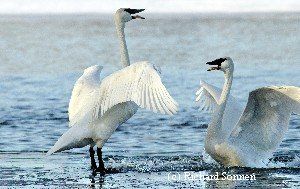
Photograph by Richard Sonnen
The mission of The Trumpeter Swan Society is to assure the vitality and welfare of wild Trumpeter Swans across North America.
Our programs focus in 5 major areas: Restoration and Management; Swan Health; Trumpeter Watch (citizen science); Education and Research; and Outreach and Advocacy.
Through the support of our donors and members, we
- work with agencies, other non-profits and the public to help educate people towards a goal of maintaining healthy populations of Trumpeter Swans and their important breeding and wintering habitats.
- coordinate efforts to restore them and to establish secure migration routes and wintering areas.
- advocate for wetland conservation using Trumpeter Swans as a symbol for "trumpeting the cause for wetlands."
- provide expertise on Trumpeter Swan biology, habitats, and any issues that may have impacts on Trumpeter Swans and associated habitats in North America.
- financially support scientific swan research and also our citizen science project, Trumpeter Watch.
- advocate for Trumpeter Swans to minimize impacts on them from projects such as new transmission line routes which may cause increased mortality.
- educate the public about unnatural threats to swans such as mortalities from transmission lines, lead poisoning and illegal shootings.
Trumpeter Swans today
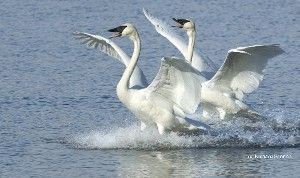
Photograph by Richard Sonnen
In 2015, there were more than 63,000 Trumpeters. This is an incredible increase from the 3,700 swans counted in 1968, at the time of the first range-wide Trumpeter Swan survey count. However, Trumpeter Swans are still missing from nearly two thirds of their original range.
Because Trumpeters were gone from most of the North American continent for more than a century, they have the lowest genetic diversity of any waterfowl species that has been studied. We do not know if this lack of diversity will affect the long term success of vulnerable populations such as the nesting flocks in Greater Yellowstone, which have not thrived, but are managing to not significantly decline.
The major threats facing Trumpeter Swans across the continent are:
- The impact of a changing climate on wetland and upland habitats used by Trumpeter Swans throughout the year.
- Continuing mortality threats from lead poisoning and power line collisions.
- Loss of quality winter habitat including wetlands and loss of farm lands where crop residues have been important winter food resources.
- Potential hunting conflicts between Trumpeter Swan recovery and Tundra Swan hunting.
- A reduction in funding by agencies to address swan management and restoration issues, secure quality habitat, and to fund swan research.
We are committed to addressing these challenges with your help.
How you can help
